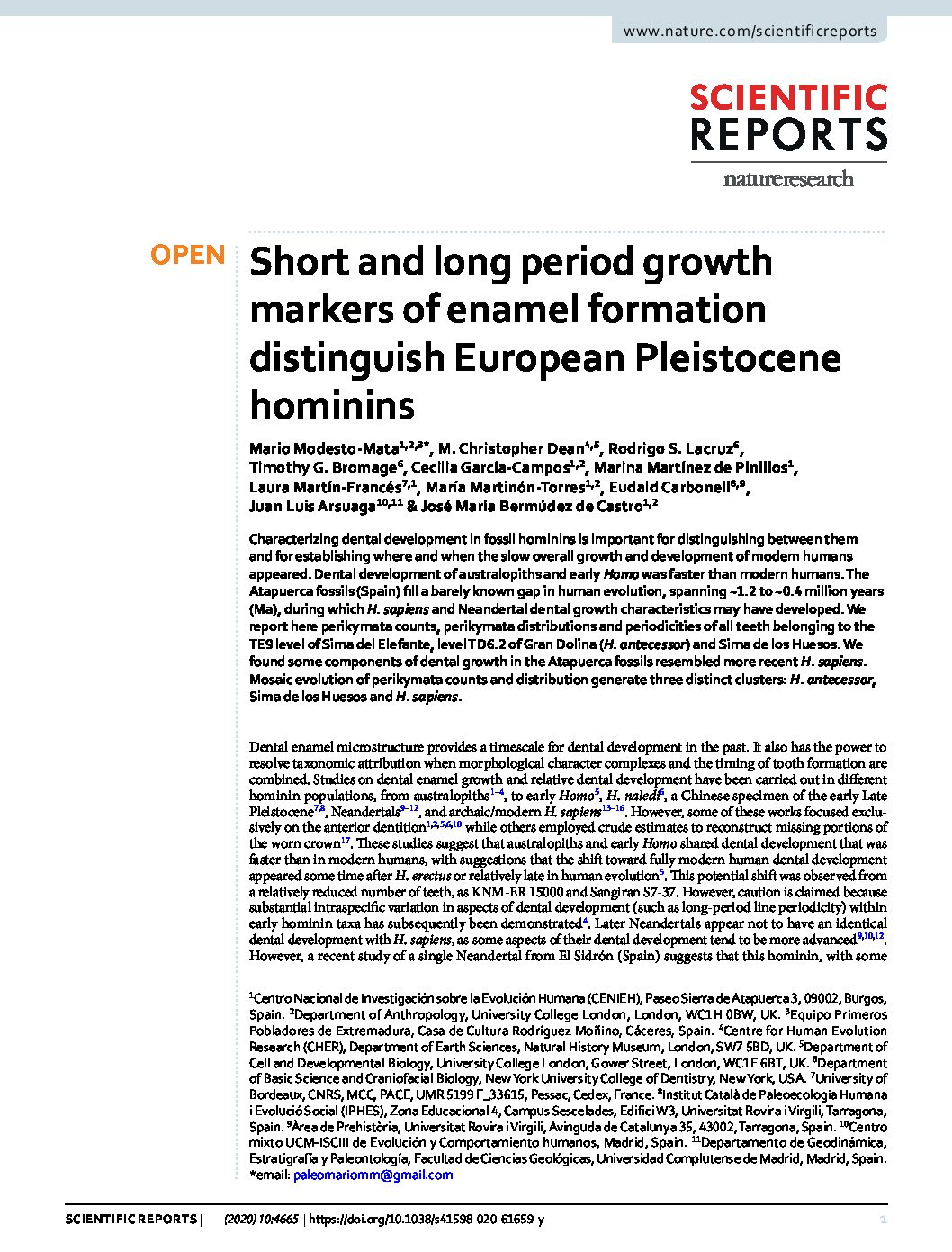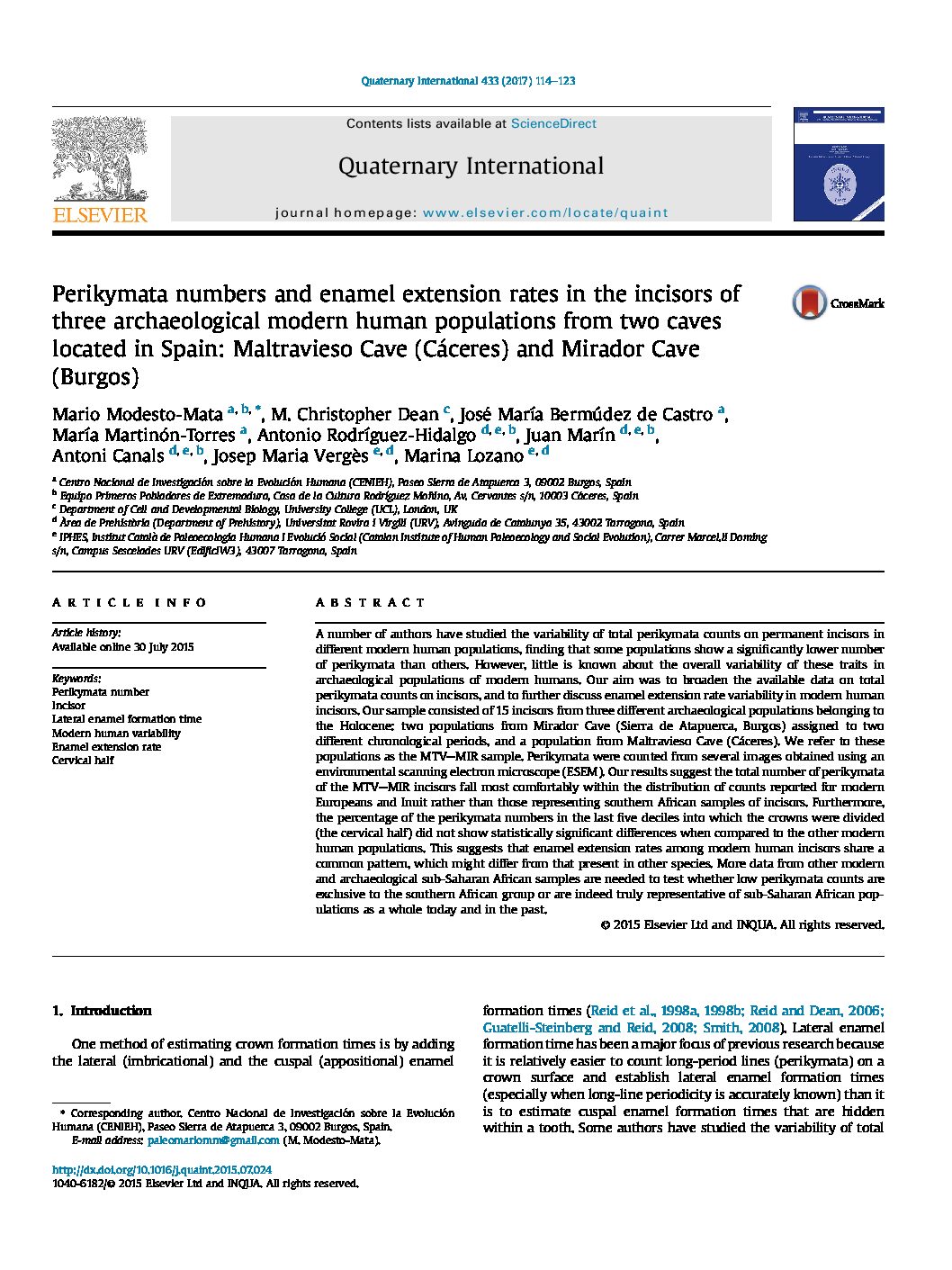Early and Middle Pleistocene hominins from Atapuerca (Spain) show differences in dental developmental patterns
The Bayesian statistical approach considers teeth as forming a developmental module, as opposed to a tooth-by-tooth analysis. This approach has been employed to analyze Upper Pleistocene hominins, including Neandertals and some anatomically modern humans, but never earlier populations. Here, we show its application on five hominins from the TD6.2 level of the Gran Dolina site (Homo antecessor, Early Pleistocene) and the Sima de los Huesos site (Middle Pleistocene) of the Sierra de Atapuerca (Burgos, northern Spain). Our results show an advanced development of the third molars in both populations with respect to modern Homo sapiens. In addition, the Sima de los Huesos hominins differ from H. sapiens and H. antecessor in the relatively advanced development of their second molar. The relative mineralization of I1/M1 in H. antecessor appears to be similar to that of modern humans, as opposed to that of Neandertals, which appear to be unique. These observations, combined with reduced enamel formation times and the advanced development of the third molars, appear to indicate a shorter ontogenetic period in the hominins from Gran Dolina and Sima de los Huesos in comparison to modern human average.



